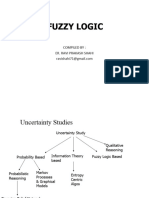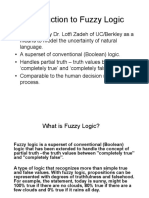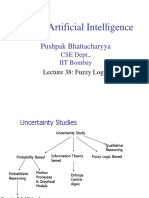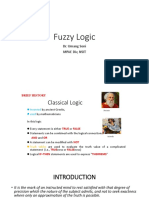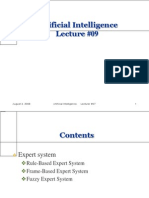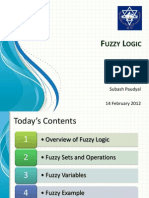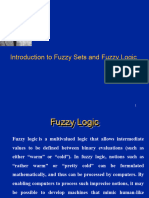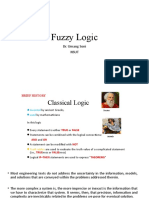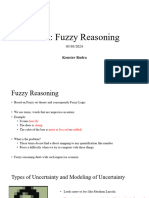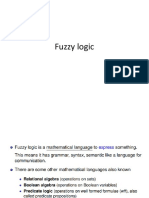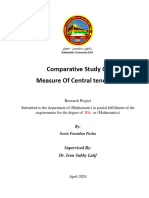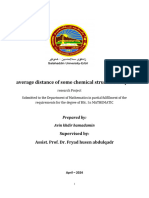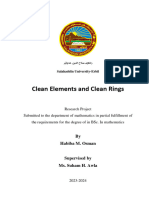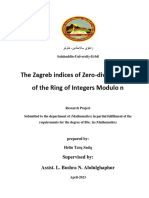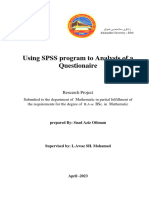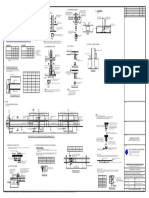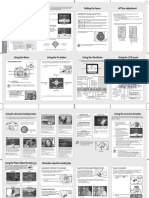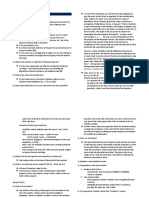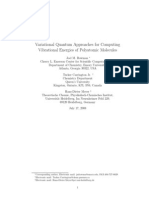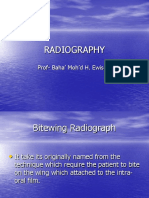0% found this document useful (0 votes)
45 views18 pagesFuzzy Notes
The document discusses fuzzy expert systems and fuzzy logic, which represent knowledge using degrees of truth rather than binary distinctions. It explains the concepts of fuzzy sets, membership functions, and the main components of fuzzy systems, including fuzzification, fuzzy inference, and defuzzification. Additionally, it outlines the advantages and disadvantages of using fuzzy logic, as well as its applications in fuzzy clustering.
Uploaded by
Samm SungCopyright
© © All Rights Reserved
We take content rights seriously. If you suspect this is your content, claim it here.
Available Formats
Download as PDF, TXT or read online on Scribd
0% found this document useful (0 votes)
45 views18 pagesFuzzy Notes
The document discusses fuzzy expert systems and fuzzy logic, which represent knowledge using degrees of truth rather than binary distinctions. It explains the concepts of fuzzy sets, membership functions, and the main components of fuzzy systems, including fuzzification, fuzzy inference, and defuzzification. Additionally, it outlines the advantages and disadvantages of using fuzzy logic, as well as its applications in fuzzy clustering.
Uploaded by
Samm SungCopyright
© © All Rights Reserved
We take content rights seriously. If you suspect this is your content, claim it here.
Available Formats
Download as PDF, TXT or read online on Scribd
/ 18







